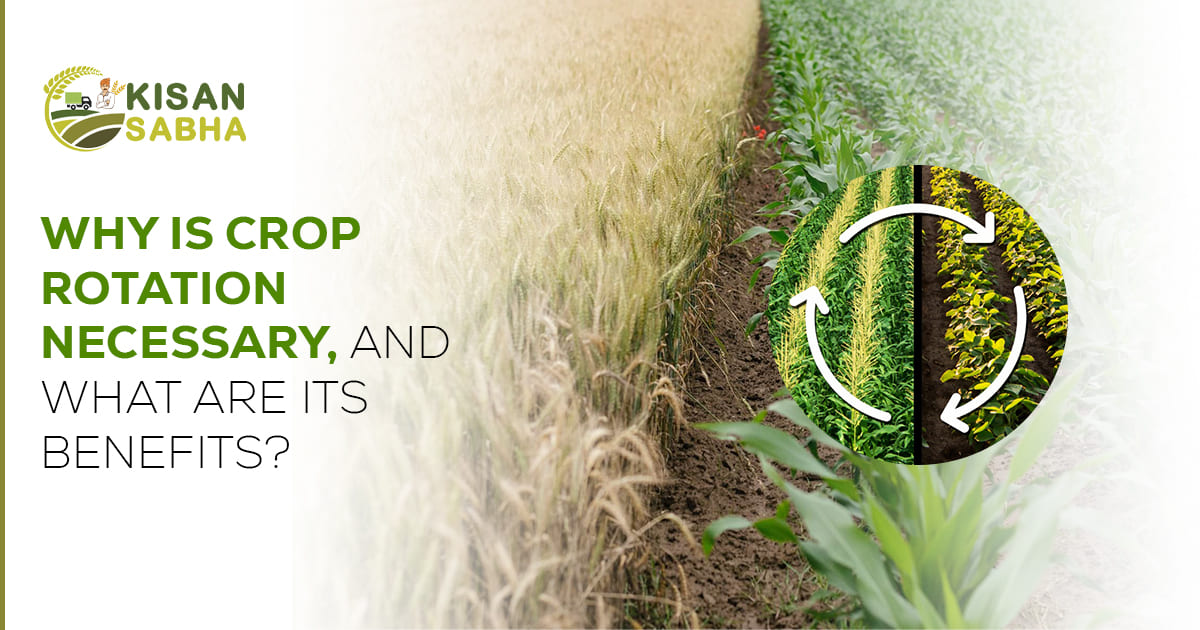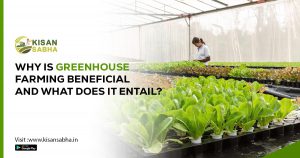Crop rotation is the practice of growing crops in various areas of the garden each year such that no one crop is grown in the same location for two or more years in a row. Crop rotation aids in the preservation of soil structure and nutrient levels and prevents soilborne pests from establishing a foothold in the garden. When a single crop is grown in the same location year after year, the soil structure gradually deteriorates as the same nutrients are consumed again and over. After a few years, the soil becomes unhealthy and depleted of those nutrients.
Benefits of Crop rotation
Crop rotation, a time-tested practice in agriculture, involves growing different crops sequentially on the same land over several years to maintain soil health, manage pests and diseases, and ensure long-term agricultural sustainability. Here are some of the significant benefits of crop rotation:
- Soil Fertility Management
One of the primary reasons for implementing crop rotation is to maintain and improve soil fertility. Different crops have varying nutrient requirements, and repeatedly growing the same crop can deplete specific soil nutrients. By rotating crops, farmers can replenish the soil with the nutrients that were previously depleted, ensuring a balanced nutrient profile.
For instance, leguminous crops like soybeans, peas, and lentils have the ability to fix atmospheric nitrogen in the soil through their symbiotic relationship with nitrogen-fixing bacteria. Planting these crops in rotation with nitrogen-demanding crops, such as corn or wheat, helps restore the soil’s nitrogen levels.
- Pest and Disease Control
Growing the same crop repeatedly can lead to an accumulation of crop-specific pests and diseases. By rotating crops, farmers can disrupt the life cycles of these pests and pathogens, effectively.
For example, certain insect pests and soil-borne pathogens may thrive in the presence of a particular host crop. Introducing non-host crops eliminates pests’ food sources, hampering their reproduction and spread. This natural pest management approach reduces the reliance on chemical pesticides, promoting a more sustainable and environmentally friendly agricultural system.
- Weed Management
Crop rotation can also play a significant role in weed management. Different crops have varying growth patterns, competitiveness, and allelopathic (chemical) effects on weeds. Rotating crops with varied traits disrupts weed cycles, creating inhospitable conditions for specific weed species.
For instance, dense-canopied crops like wheat or rye can effectively shade out and suppress weed growth during their early developmental stages. Alternatively, incorporating a cover crop or green manure crop into the rotation can outcompete weeds for resources and potentially release allelopathic compounds that inhibit weed germination and growth.
- Improved Water Use Efficiency
Crop rotation can contribute to better water use efficiency in agricultural systems. Different crops have varying water requirements and root architectures, influencing their ability to access and utilize soil moisture.
For example, rotating a deep-rooted crop like alfalfa with a shallow-rooted crop like wheat can help utilize soil moisture from different soil depths. Additionally, incorporating drought-tolerant crops or cover crops into the rotation can improve soil structure and water infiltration, leading to better water retention and utilization.
- Increased Biodiversity
Crop rotation promotes biodiversity both above and below the ground. Growing diverse crops creates complex habitats supporting beneficial organisms like insects, birds, and soil microbes.
Increased biodiversity can contribute to improved pollination, natural pest control, and nutrient cycling processes. Furthermore, diverse crop rotations foster a wider array of beneficial soil microorganisms crucial for sustaining soil health and fertility.
- Economic Benefits
Crop rotation offers long-term economic benefits by reducing input costs and mitigating risks, leading to increased profitability for farmers. Crop rotation can lower input costs and promote sustainable farming practices by reducing reliance on synthetic fertilizers and pesticides.
Furthermore, diversifying crop production can help farmers mitigate risks associated with market fluctuations, pests, and climate variability.
- Environmental Sustainability
Crop rotation is a cornerstone of sustainable agriculture, as it contributes to long-term soil health, reduces chemical input requirements, and promotes agricultural productivity. By minimizing environmental impacts, this practice preserves natural resources and supports the ecosystem services provided by a healthy agroecosystem. Crop rotation also contributes to climate change mitigation by sequestering carbon in the soil, reducing greenhouse gas emissions, and fostering agricultural resilience.
Conclusion
Crop rotation is a time-tested agricultural practice that offers numerous benefits. From soil health, pest, and disease management, weed control, water use efficiency etc. Indeed by implementing diverse crop rotations, farmers can create a more resilient and sustainable agricultural system. That not only enhances productivity but also contributes to environmental conservation and long-term food security.





